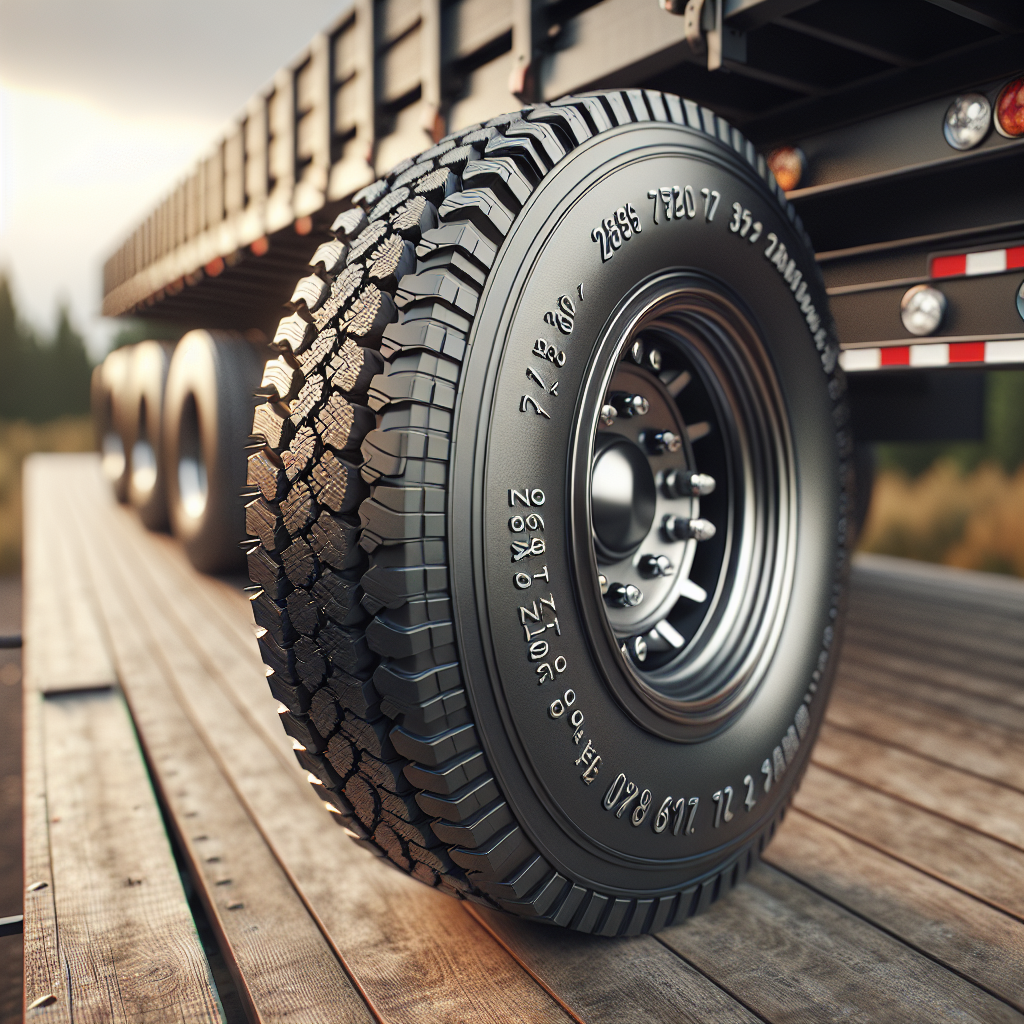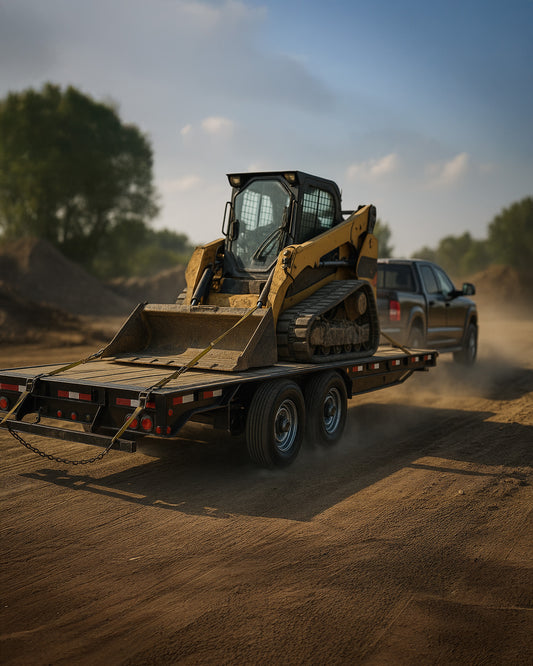

When it comes to towing, understanding the trailer tire number meaning is crucial for ensuring safety and performance on the road. Each tire on your trailer carries a specific code, which provides essential information about its size, load capacity, and speed rating. Familiarizing yourself with these numbers can help you make informed decisions regarding tire maintenance and replacement, ultimately enhancing your towing experience.
Trailer tires are different from regular vehicle tires in terms of construction and specifications. They are engineered to carry heavy loads and withstand the unique stresses of towing. The numbers printed on the sidewalls of the tires contain valuable data, including:
- Width: The first number indicates the tire's width in millimeters.
- Aspect Ratio: This number is a percentage that represents the tire's height relative to its width.
- Diameter: The diameter of the wheel that the tire fits, measured in inches.
- Load Index: This number indicates the maximum load the tire can support.
- Speed Rating: A letter that represents the maximum speed the tire can safely handle.
By understanding these specifications, you can better maintain your trailer tires, ensuring they are suitable for your towing needs. Tow with peace of mind, knowing that trailerwatchdog is standing guard. Visit trailerwatchdog.com to learn how our monitoring system can enhance your trailer safety.
Decoding the Trailer Tire Number Format

To fully grasp the trailer tire number meaning, it’s essential to decode the specific format used in the tire markings. Typically, the tire number consists of a combination of letters and numbers, each representing different attributes of the tire.
A common format you might encounter is P215/75R15. Here’s how to break it down:
- P: Indicates the tire's type, such as P for passenger vehicles. For trailers, you might see LT for light truck.
- 215: This is the tire's width in millimeters, measuring from sidewall to sidewall.
- 75: Known as the aspect ratio, this number indicates the height of the tire's sidewall as a percentage of its width. In this case, the sidewall height is 75% of 215 mm.
- R: Signifies radial construction, which is the most common type of tire for trailers.
- 15: This number represents the diameter of the wheel in inches that the tire is designed to fit.
In addition to these basic elements, you may also find additional markings that provide further information, such as load ratings, speed ratings, and the DOT code, which indicates compliance with Department of Transportation standards. Understanding this format allows you to choose the right tires for your trailer, ensuring optimal performance and safety on the road.
Importance of Trailer Tire Load Ratings

One of the most crucial aspects of understanding trailer tire number meaning is recognizing the significance of load ratings. Load ratings indicate the maximum weight a tire can safely support when fully inflated. This measurement is vital for ensuring the safety and performance of your trailer during transport.
Each tire has a specific load rating, which is typically displayed on the tire’s sidewall. Common load ratings include:
- ST (Special Trailer): Tires designed specifically for trailers, offering improved handling and stability.
- LT (Light Truck): Suitable for light trucks, these tires can also be used on trailers but may not provide the same performance as ST tires.
- Load Index: A numerical code that represents the tire's load-carrying capacity. For example, a load index of 104 corresponds to a maximum load of 1,999 lbs.
Using tires that meet or exceed the necessary load ratings protects your trailer and cargo from potential hazards, such as tire blowouts or structural damage. Underestimating the required load capacity can lead to unsafe driving conditions, decreased maneuverability, and increased wear on both the tires and the trailer itself.
In summary, understanding and adhering to tire load ratings is essential for maintaining safety and reliability while towing. Always consult the manufacturer's specifications for your trailer to select the appropriate tires.
Understanding Tire Pressure Specifications

Another critical element in grasping the trailer tire number meaning is understanding tire pressure specifications. Proper tire pressure is essential for optimal performance, safety, and longevity of your trailer tires. Each tire comes with a recommended pressure range, which is usually found on the tire's sidewall or the trailer's information placard.
Protect your trailer
Maintaining the correct tire pressure offers several benefits:
- Enhanced Fuel Efficiency: Properly inflated tires reduce rolling resistance, leading to better fuel economy during towing.
- Improved Handling: Correct tire pressure ensures that your trailer maintains stability and control, especially during turns and sudden stops.
- Reduced Wear: Tires that are consistently inflated to the recommended pressure experience less wear and tear, extending their lifespan.
It's important to note that tire pressure can fluctuate due to temperature changes. As temperatures drop, tire pressure decreases, and vice versa. Therefore, it's advisable to check your tire pressure regularly, particularly before long trips or after significant temperature changes.
In addition, over-inflated tires can lead to a harsh ride, while under-inflated tires can cause excessive heat buildup, increasing the risk of blowouts. Thus, adhering to tire pressure specifications is not just a recommendation; it is a crucial aspect of safe towing practices.
How to Read Trailer Tire Manufacturing Date

Understanding how to read the trailer tire manufacturing date is essential for ensuring that your tires are safe and effective for use. This date is encoded within the tire's DOT (Department of Transportation) number, which can be found on the tire's sidewall. The DOT number provides important information about the tire's origin and production date.
The last four digits of the DOT number represent the week and year of manufacture. For example, if the last four digits are 1219, this indicates that the tire was manufactured in the 12th week of 2019. Here’s how to interpret it:
- First two digits: These indicate the week of the year (01 to 52).
- Last two digits: These represent the year of manufacture (e.g., 19 for 2019).
Knowing the manufacturing date is critical because tires have a shelf life, even if they haven't been used. Generally, tires should be replaced every six years, regardless of tread wear. This is due to the natural deterioration of rubber compounds over time, which can affect performance and safety.
Additionally, if you come across a tire that is older than ten years, it is highly recommended to replace it, even if it appears to be in good condition. Regularly checking the manufacturing date can help you maintain a safer towing experience and prevent potential tire failures on the road.
Maintaining Your Trailer for Optimal Performance
To ensure your trailer operates at its best, regular maintenance is key. Proper trailer maintenance not only prolongs the lifespan of the trailer but also enhances safety while towing. Here are some essential maintenance tips to keep your trailer in optimal condition:
- Inspect Tires: Regularly check tire pressure and tread depth. Ensure that tires are inflated to the manufacturer's recommended PSI and replace any that show signs of excessive wear or damage.
- Check Axles and Brakes: Inspect the axle components and brake systems for any signs of wear or damage. Make sure that brakes engage smoothly and evenly.
- Lubricate Moving Parts: Apply lubricant to hinges, bearings, and other moving parts to prevent rust and ensure smooth operation.
- Examine Lights and Wiring: Ensure that all lights are functioning properly and that the wiring is intact. Faulty lights can lead to accidents and are often a point of failure during towing.
- Clean and Protect: Regularly wash your trailer to remove dirt and debris. Applying a protective coating can shield it from the elements and reduce wear.
Staying proactive with these maintenance practices can significantly reduce the risk of catastrophic failures while on the road. Additionally, integrating a smart trailer monitoring system can provide real-time data on tire pressure and axle temperatures, alerting you to any potential issues before they become serious problems.
Tow with peace of mind, knowing that trailerwatchdog is standing guard.




